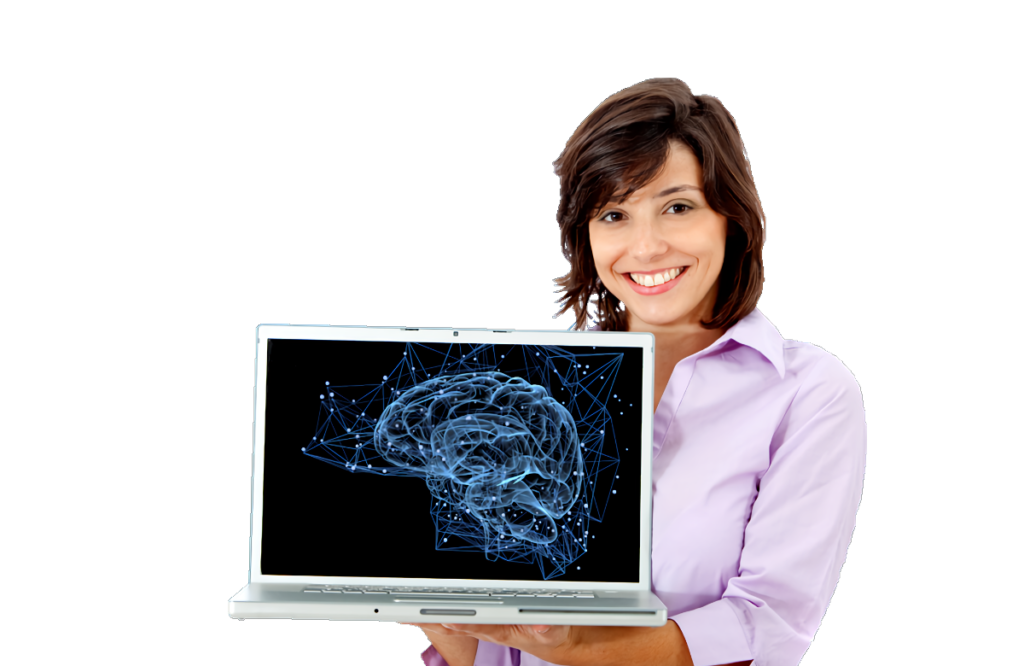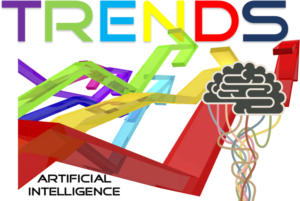Since the public release of large language models (LLMs), like ChatGPT, a plethora of articles have been written about how artificial intelligence (AI) will take over jobs currently performed by humans. There are certainly reasons to be concerned; however, those concerns may be overblown. Like other technologies, artificial intelligence was initially developed to help humans become more productive. Half-a-dozen years ago, Ginni Rometty, former CEO of IBM, explained, “The idea [of developing cognitive computing] was to help you and I make better decisions amid cognitive overload. … If I considered the initials AI, I would have preferred augmented intelligence. It’s the idea that each of us are going to need help on all important decisions.”[1]
During the ensuing years, decision science and cognitive computing have continued to mature. Jerry Levine, Chief Evangelist & General Counsel at ContractPodAi, notes, “Cognitive computing helps with many work-related tasks and now has countless applications in science, commerce, health care, gaming, and legal. In fact, AI has the potential to transform whole companies and industries in the same way that personal computers and the internet changed them previously.”[2] He adds, “Nevertheless, human intelligence is still far more creative and critical than the artificial variety. So, what do corporate leaders need to know about bringing the two together successfully? How can both employees and AI play a supportive role in enhancing and advancing human capabilities?” Those are excellent questions.
Augmenting Human Intelligence
Levine notes, “Ultimately, collaborative intelligence aims to increase human efficiency and effectiveness and facilitate higher-value work even further. A report by Gartner argues that ‘AI interacting with people and improving what they already know reduces mistakes and routine work, and can improve customer interactions.’ The process complements productivity and problem-solving with good, old-fashioned common sense.” One might question where the “good, old-fashioned common sense” is being generated. The 18th century writer Voltaire wrote, “Common sense is not so common.” The 19th century newspaper editor Horace Greely agreed. “Common sense,” he wrote, “is very uncommon.” The 19th century English poet Samuel Taylor Coleridge added, “Common sense, in an uncommon degree, is what the world calls wisdom.” If common sense among humans seems to be a rare thing, it shouldn’t surprise you to learn that common sense is also rare among thinking machines. Levine, I think, is implying that humans and machines working together can ensure that common sense is much more common.
Rob Toews, a venture capitalist at Radical Ventures, observes, “Humans’ ‘common sense’ is a consequence of the fact that we develop persistent mental representations of the objects, people, places and other concepts that populate our world — what they’re like, how they behave, what they can and cannot do.”[3] He believes AI systems are incapable of forming mental models. He explains, “They do not possess discrete, semantically grounded representations of, say, a house or a cup of coffee. Instead, they rely on statistical relationships in raw data to generate insights that humans find useful.” At Enterra Solution® we address the common-sense conundrum by developing applications within business domains where knowledge and common sense can be bounded.
For example, for our Insight Engine, we limit its knowledge to expected outcomes (which is a very limited subset of all domain knowledge); and, common sense is used to explain the insights when any expectations are violated within one business domain, such as the consumer packaged goods (CPG) sector. Early in our development of the Enterra Autonomous Decision Science™ platform, we partnered with Cycorp® and have benefited from an exclusive relationship for use of its ontology within the CPG sector. Sadly, Cycorp’s founder Doug Lenat passed away last year. Before his passing, Toews observed, “For over thirty-five years, AI researcher Doug Lenat and a small team at Cyc have devoted themselves to digitally codifying all of the world’s commonsense knowledge into a set of rules. These rules include things like: ‘you can’t be in two places at the same time,’ ‘you can’t pick something up unless you’re near it,’ and ‘when drinking a cup of coffee, you hold the open end up.’ As of 2017, it was estimated that the Cyc database contained close to 25 million rules and that Lenat’s team had spent over 1,000 person-years on the project.” In other words, for bounded business applications, Cyc provides cognitive systems with something very close to common sense.
Futurist Bernard Marr agrees with Levine that human/machine collaboration is the best way forward. “Welcome to the age of blended workforces,” he writes, “where intelligent machines and humans combine to accelerate business success.”[4] In order to find the right balance between the work done by humans and the work taken on by intelligent machines, Marr insists business leaders need to understand what machines are capable of doing. He writes, “Business leaders often aren’t up to speed on the sheer range of tasks that today’s AIs and intelligent robots can take on. … This knowledge is key to finding the right balance between humans and machines in your organization. Some of the things AIs and AI-enabled robots can do are pretty mind-blowing.”
Does Augmented Intelligence Really Improve Productivity?
Journalist Jennifer Liu reports a research study conducted by a team from Stanford and MIT found, “Artificial intelligence tools like chatbots helped boost worker productivity at one tech company by 14%. … The study is thought to be the first major real-world application of generative AI in the workplace. Researchers measured productivity of more than 5,000 customer support agents, based primarily in the Philippines, at a Fortune 500 enterprise software firm over the course of a year. Tech support agents who used AI tools that created conversational scripts boosted their productivity, measured as issues resolved per hour, by 14% on average, but the improvement was even more pronounced for ‘novice and low-skilled workers’ who were able to get their work done 35% faster.”[5]
Journalist John Burn-Murdoch reports that a more recent study conducted by Harvard Business School had similar results. The study monitored the impact of giving GPT-4, OpenAI’s latest and most advanced offering, to employees at Boston Consulting Group. Burn-Murdoch writes, “BCG staff randomly assigned to use GPT-4 when carrying out a set of consulting tasks were far more productive than their colleagues who could not access the tool. Not only did AI-assisted consultants carry out tasks 25 per cent faster and complete 12 per cent more tasks overall, their work was assessed to be 40 per cent higher in quality than their unassisted peers.”[6] He adds, “Employees right across the skills distribution benefited, but in a pattern now common in generative AI studies, the biggest performance gains came among the less highly skilled in their workforce.” The bottom line appears to be that augmenting human intelligence with artificial intelligence increases productivity across the board — with the greatest increases coming from the least-skilled workers.
Concluding Thoughts
Krishna Kumar, Founder and CEO, Learnbay, writes, “There’s a prevailing misconception that the future of data science is a battleground where humans compete with machines. In reality, the future lies in collaboration.”[7] He adds, “The potency of human intuition and experiential wisdom combined with the computational prowess of machines ushers in an era of unparalleled potential. It’s a duet, not a duel.” Among the areas where corporations can expect to gain benefits of this “duet,” Kumar stresses these three:
AI vs. Augmented Intelligence. Kuman explains, “While Artificial Intelligence aims to create machines that can act and think like humans, Augmented Intelligence amplifies human capabilities. Augmented Intelligence does not replace human insight but rather enhances it. It’s akin to a magnifying glass which, while not possessing vision of its own, can amplify our ability to see.”
Reducing Cognitive Overload. Like Rometty, Kumar sees enormous benefits in reducing cognitive overload. He writes, “One of the pivotal benefits of Augmented Intelligence is alleviating the cognitive workload on data scientists. Handling repetitive tasks, sifting through vast data streams, and highlighting anomalies allows data professionals to focus on the intricate nuances and complex analyses that demand human intuition.”
Augmenting Decision-making. According to Kumar, “Incorporating Augmented Intelligence into the decision-making matrix ensures that decisions are not just data-driven but are also based on experiential, contextual, and nuanced human perspectives. It’s about making choices that are both quantitatively sound and qualitatively resonant.” At Enterra® we believe that allowing machines to make routine autonomously leaves humans to concentrate on more nuanced, high-level decisions as well as helping reduce cognitive overload.
Like the experts cited above, I’m a big believer that the future belongs to companies that find the right balance between human and machine workloads.
Footnotes
[1] Megan Murphy, “Ginni Rometty on the End of Programming,” Bloomberg BusinessWeek, 20 September 2017.
[2] Jerry Levine, “Combining Intelligence: How People And AI Can Collaborate,” Forbes, 26 April 2022.
[3] Rob Toews, “What Artificial Intelligence Still Can’t Do,” Forbes, 1 June 2021.
[4] Bernard Marr, “Human Vs. Artificial Intelligence: Why Finding The Right Balance Is Key To Success,” Forbes, 30 May 2022.
[5] Jennifer Liu, “Stanford and MIT study: A.I. boosted worker productivity by 14%—those who use it ‘will replace those who don’t’,” CNBC Make It, 23 April 2023.
[6] John Burn-Murdoch, “Here’s what we know about generative AI’s impact on white-collar work,” Financial Times, 10 November 2023.
[7] Krishna Kumar, “Augmented Intelligence: How Humans and Machines Team Up in Future Data Science,” CXO Today, 25 September 2023.





